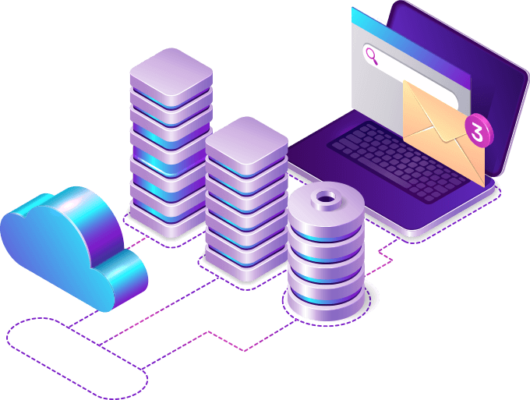
High Availability & Disaster Recovery (HA/DR) is an important part of any enterprise IT infrastructure. It enables businesses to maintain operations and services in the event of a disaster or outage. When it comes to SAP HANA, the challenge is to ensure the highest levels of availability and disaster recovery, while also optimizing performance and costs. This is where SAP HANA DR comes in.
What is High Availability & Disaster Recovery with SAP HANA DR?
SAP HANA DR is a powerful solution for organizations that need to protect their SAP HANA databases against hardware and software failures, as well as other disruptions. It offers a comprehensive suite of features that provide high availability and disaster recovery for SAP HANA systems.
High availability means that the system is always available and that downtime is minimized. Disaster recovery ensures that the system can be quickly restored in the event of a disaster or outage. SAP HANA DR provides both of these features in a cost-effective and reliable way.
Benefits of High Availability and Disaster Recovery
There are numerous benefits of high availability and disaster recovery for SAP HANA systems. These include:
- Increased system reliability and uptime: By leveraging the power of SAP HANA DR, organizations can ensure that their systems are always available and reliable.
- Faster recovery times: With SAP HANA DR, organizations can quickly and easily restore their systems in the event of an outage or disaster.
- Improved performance: By leveraging the power of SAP HANA DR, organizations can improve their system performance, as the system is always available and reliable.
- Cost savings: By leveraging the power of SAP HANA DR, organizations can save costs associated with system downtime and disruption.
Why SAP HANA DR?
SAP HANA DR is a powerful solution for organizations that need to protect their SAP HANA databases against hardware and software failures, as well as other disruptions. It provides a comprehensive suite of features that provide high availability and disaster recovery for SAP HANA systems.
The key benefits of SAP HANA DR are:
- Increased system availability: SAP HANA DR provides a reliable and resilient system that is always available and running.
- Faster recovery times: SAP HANA DR enables organizations to quickly restore their systems in the event of an outage or disaster.
- Improved performance: SAP HANA DR ensures that the system is always available and reliable, leading to improved performance.
- Cost savings: SAP HANA DR offers cost savings associated with system downtime and disruption.
SAP HANA DR on AWS
SAP HANA DR on AWS is a powerful solution for organizations that need to protect their SAP HANA databases against hardware and software failures, as well as other disruptions. It enables organizations to leverage the power of AWS to deploy and manage their SAP HANA DR environment.
The key benefits of SAP HANA DR on AWS are:
- Increased agility: Organizations can quickly and easily deploy and manage their SAP HANA DR environment on AWS.
- Reduced costs: Organizations can leverage the cost-effectiveness of AWS to reduce the costs associated with their SAP HANA DR environment.
- Improved performance: Organizations can leverage the power of AWS to improve the performance of their SAP HANA DR environment.
- Increased security: Organizations can leverage the security features of AWS to ensure the security of their SAP HANA DR environment.
Overview of SAP HANA DR
SAP HANA DR is a powerful solution for organizations that need to protect their SAP HANA databases against hardware and software failures, as well as other disruptions. It provides a comprehensive suite of features that provide high availability and disaster recovery for SAP HANA systems.
The key features of SAP HANA DR include:
- Automatic failover: SAP HANA DR enables organizations to configure automatic failover of their system in the event of an outage or disaster.
- Data replication: SAP HANA DR enables organizations to replicate their data across multiple systems to ensure high availability and disaster recovery.
- Backup and recovery: SAP HANA DR enables organizations to backup and recover their data in the event of an outage or disaster.
- Load balancing: SAP HANA DR enables organizations to balance the load across multiple systems to ensure optimal performance.
Components of SAP HANA DR
SAP HANA DR is made up of several components, including:
- SAP HANA Enterprise Edition: This is the core component of SAP HANA DR and is responsible for managing the system and providing high availability and disaster recovery.
- SAP HANA Database Replication: This component enables organizations to replicate their data across multiple systems to ensure high availability and disaster recovery.
- SAP HANA Backup and Recovery: This component enables organizations to backup and recover their data in the event of an outage or disaster.
- SAP HANA Load Balancing: This component enables organizations to balance the load across multiple systems to ensure optimal performance.
How to Implement SAP HANA DR
Implementing SAP HANA DR can be a complex process. Organizations should ensure that they plan and prepare carefully before attempting to implement the solution.
The key steps in implementing SAP HANA DR include:
- Planning: Organizations should plan their SAP HANA DR implementation carefully to ensure that they have the necessary resources and expertise.
- Design: Organizations should design their SAP HANA DR environment carefully to ensure that it meets their requirements.
- Testing: Organizations should test their SAP HANA DR environment thoroughly before deploying it in production.
- Deployment: Organizations should deploy their SAP HANA DR environment carefully to ensure that it is reliable and resilient.
Best Practices for SAP HANA DR
Organizations should ensure that they adhere to the best practices for SAP HANA DR to ensure that the system is reliable and resilient. The key best practices for SAP HANA DR include:
- Automation: Organizations should leverage the power of automation to ensure that the system is always available and reliable.
- Monitoring: Organizations should monitor their SAP HANA DR environment to ensure that it is performing as expected.
- Security: Organizations should ensure that their SAP HANA DR environment is secure and that all access is securely controlled.
- Performance: Organizations should ensure that their SAP HANA DR environment is optimized for performance to ensure the best possible experience for their users.
Challenges of SAP HANA DR
SAP HANA DR can be a complex solution to implement and manage. Organizations should be aware of the potential challenges that they may face when implementing and managing the system.
The key challenges of SAP HANA DR include:
- Complexity: SAP HANA DR can be a complex solution to implement and manage. Organizations should ensure that they have the necessary expertise and resources to successfully implement and manage the system.
- Cost: SAP HANA DR can be a costly solution to implement and manage. Organizations should ensure that they budget appropriately for the system.
- Performance: Organizations should ensure that their SAP HANA DR environment is optimized for performance to ensure the best possible experience for their users.
Conclusion
High Availability & Disaster Recovery (HA/DR) is an important part of any enterprise IT infrastructure. SAP HANA DR is a powerful solution for organizations that need to protect their SAP HANA databases against hardware and software failures, as well as other disruptions. It provides a comprehensive suite of features that provide high availability and disaster recovery for SAP HANA systems. Organizations should ensure that they adhere to the best practices for SAP HANA DR to ensure that the system is reliable and resilient. With SAP HANA DR, organizations can ensure that their systems are always available and reliable, enabling them to quickly and easily restore their systems in the event of an outage or disaster, while also improving performance and saving costs.




